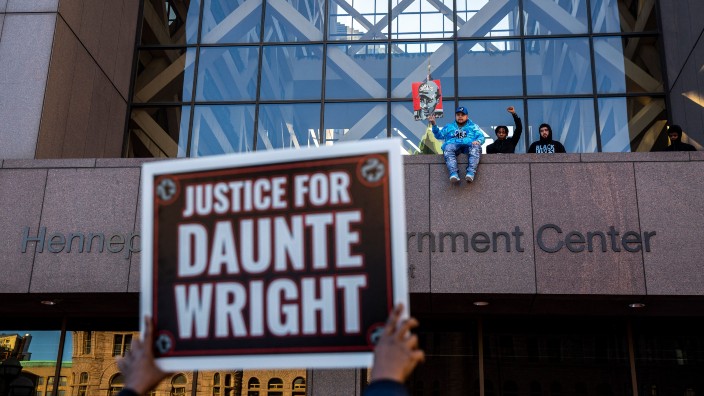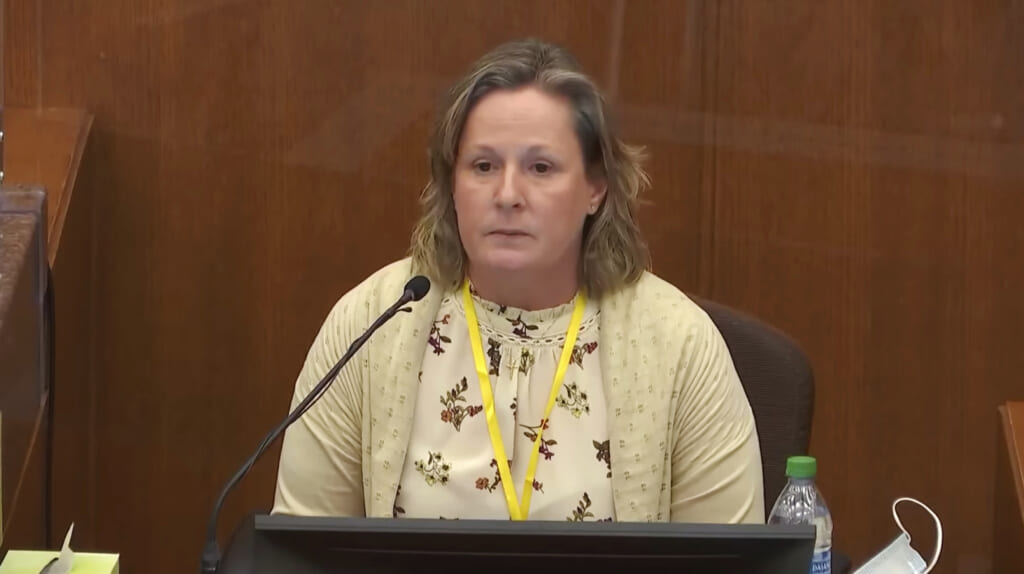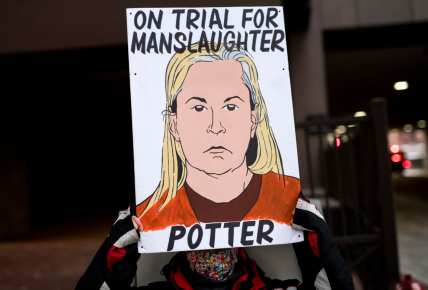Mistake or manslaughter? Even when the evidence seemed clear, the Kimberly Potter trial was not open and shut
OPINION: Given that juries often side with police, it was imperative the prosecution presented evidence that demonstrated Potter acted unreasonably and recklessly in causing Daunte Wright’s death.

Mistake or manslaughter was a recurring theme throughout the trial of former Brooklyn Center police officer Kimberly Potter for the killing of 21-year-old Daunte Wright during an April 11 traffic stop. Initially, upon viewing the body-worn camera and realizing another Black man had died at the hands of law enforcement, my initial reaction was, of course, she’s guilty.
However, it’s not that simple. Was this manslaughter or a mistake? Did Kim Potter act intentionally or implicitly? When does an act become criminal—when does a mistake become manslaughter? After deliberating for about 27 hours over four days, the jury found Potter guilty of first- and second-degree manslaughter.
Generally, when an individual is charged with killing another, we look to the intent. What was the defendant’s state of mind or “mens rea,” as we call it in the legal field. The state of Minnesota charged Potter with first- and second-degree manslaughter, which does not require proof of intent. In fact, the state continually harped on the fact that they did not have to prove Potter intended to kill Wright—nor did they believe she intended to.

It was necessary for the prosecution to prove beyond a reasonable doubt that Potter acted recklessly when she shot her gun instead of her taser. Would another officer in her shoes have acted in the same manner—were her actions reasonable under the circumstances. In Minnesota, when determining whether Potter committed first-degree manslaughter, the jury was tasked with deciding whether Potter acted in a manner in which she was aware of the risk but disregarded it anyway. When considering whether Potter was guilty of second-degree manslaughter, the jury had to consider whether Potter should have known the risk.
For this reason, it was imperative that the prosecution introduced evidence that demonstrated Potter acted unreasonably and was the cause of Wright’s death. Evidence showed her many years of training on the use of a taser; photos demonstrated she continually holstered her taser on her left side; prosecutors noted her 26 years on the police force and the fact that she was training a new officer; expert testimony regarding whether using her taser was reasonable under the circumstances were all considered by the jury when determining whether Potter should have known the difference between the bright-yellow taser and her black Glock. The initial gut response was, of course—it’s incumbent upon all officers to know the difference. How could she confuse a bright-yellow taser on her nondominant side (her left) with her handgun on her right side? How could she confuse the two?
Through cross-examination and testimonial evidence, the defense initially attempted to demonstrate Potter’s actions were a mistake. However, throughout the rollercoaster of the trial, the defense’s theory changed abruptly to Potter being justified in using deadly force because she thought Sgt. Mychal Johnson’s life was in danger. Essentially, the defense blamed Wright for his tragic death.
When Wright tried to get back in the car, Potter claimed she observed the fear in Sgt. Johnson’s eyes and, as a result, that justified using the gun, not just the taser. The defense disregarded the fact that Wright had no weapons, did not threaten the officers and only attempted to flee. As absurd as the defense’s argument sounds, some believed this put a dent in the prosecution’s case, especially since Sgt Johnson stated in the video, “he [Daunte] was trying to drive away with me in the car.”
This case was not open and shut. Although this occurred in Minneapolis, where Derek Chauvin was convicted for the murder of George Floyd—Wright’s shooting occurred during Chauvin’s trial—the facts are different. The world could see Chauvin acted with total disregard and was reckless and intentional. This case was not as blatant—many people considered Potter’s reaction when she realized she shot her gun as proof this was an accident. However, there is also the question of whether she acted in that manner because she knew she acted recklessly and did not want to go to prison.
During cross-examination, Potter admitted she did nothing to ensure that Wright or the occupants of the other vehicle were OK (After Wright was shot, his vehicle sped forward and cause a collision with another vehicle driven by an elderly white couple). She never even checked on her fellow officer (Sgt. Johnson), who she thought was in great bodily danger. Potter expressed extreme sorrow and cried out, “I’m sorry,” yet couldn’t refer to Wright by name.
Potter’s actions may not have been intentional, but her implicit bias could have played a role in her actions that day. Implicit bias is unconscious but heavily influences our actions based on our experiences. The prosecution pointed out as she approached Wright’s vehicle, she already had her hand on the holster of her handgun. Police initially stopped Wright because of an expired registration and having an air freshener on the review mirror. This was simply a traffic stop—there was no cause to believe Wright would act in a manner that required a gun or taser.
Judge Regina Chu’s instructions to the jury included biases. She stated, “We all have feelings, assumptions, perceptions, fears and stereotypes about others…some biases we are aware of and others we might not be fully aware of, which is why they are called ‘implicit’ or ‘unconscious biases.’” This may have been a contributing factor as to why Potter reached for her handgun right out the gate. Ironically, Judge Chu also instructed the jury that they could only make their decision based upon the evidence, not upon any biases.
Those attempting to transform the criminal justice system continually advocate that not all cases require criminal action—it’s important that we look to the totality of the circumstances. To be completely transparent, analyzing the trial of Kimberly Potter was difficult. The fact that this was Potter’s first time using her gun, that she had no previous misconduct should be considered. But the law is the law, and it must be applied blindly. If a jury can convict Rogel Aguilera-Mederos—who was sentenced to 110 years after the brakes failed on the truck he was driving, causing an accident he had no control over that led to the death of four people—Potter should be convicted as well—right? You be the judge.

Stephanie is an Attorney and Policy Strategist focusing on reforming the Criminal Legal System. Stephanie was an anchor on the Law and Crime Network and has provided legal analysis for Fox News.
Have you subscribed to theGrio podcasts “Dear Culture” or “Acting Up?” Download our newest episodes now!
TheGrio is now on Apple TV, Amazon Fire and Roku. Download theGrio.com today!
More About:Opinion











